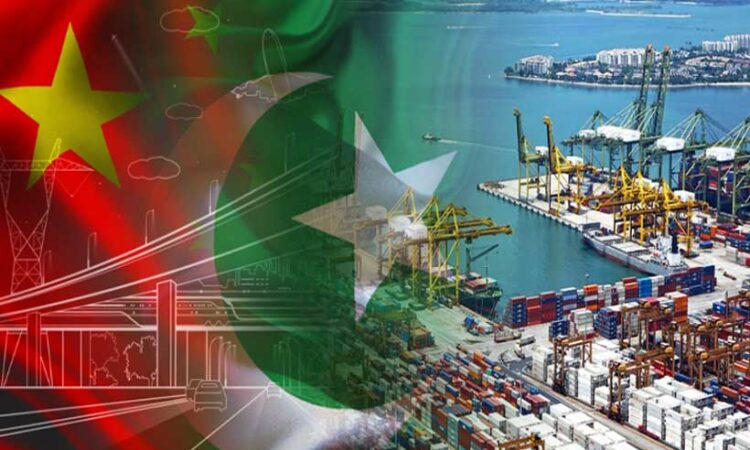
The China-Pakistan Economic Corridor (CPEC) is not merely a development initiative; it’s a monumental journey of strategic partnership and economic cooperation between two significant players on the global stage. From its initial phase to its current development, the CPEC has continuously redefined the socio-economic landscapes of both China and Pakistan. The CPEC project was conceived in 2013 as a vast 3000 km infrastructure network aimed at solidifying trade relationships between China and Pakistan. This initiative, symbolizing the intersection of sea and land routes, was designed to promote seamless and rapid transportation of goods, thereby boosting economic development in both nations.
Within the first half of its existence, the CPEC unfurled an array of opportunities across diverse sectors in Pakistan. Fast forward to a decade later, the corridor’s impact is profound: Pakistan witnessed the creation of over 100,000 employment opportunities, significantly reducing the unemployment rate and stimulating its economy. The corridor addressed Pakistan’s pressing energy crises by bringing forth 6000 MW of electricity, supported by over 800 Kms of transmission lines. The past decade has seen an array of milestone projects under CPEC. The crowning jewel among them is the Gwadar Port, which promises to redefine maritime trade in the region. With CPEC’s development, there was a significant rise in the quality of life among the local Pakistani residents. Enhanced infrastructure, better roadways, and consistent power supply play pivotal roles in this upliftment.
While the primary objective of CPEC was economic, its ripple effect on cultural ties between China and Pakistan is noteworthy. There has been an increased interest in cultural exchanges, language programs, and academic collaborations. The mutual appreciation and understanding fostered through such programs help solidify diplomatic relations beyond mere economic interests.
The CPEC, while a bilateral project, has implications that resonate on a global scale. CPEC’s promise of connecting the Chinese mainland to the Arabian Sea can redefine global trade routes. This sea-and-land-based corridor can shorten trade routes, providing an alternative to the traditional Strait of Malacca route. The corridor has been a focal point for international diplomatic dialogues. While it has strengthened China-Pakistan ties, it has also been a topic of interest and concern for other global powers. The strategic location of the corridor, especially Gwadar Port, puts it at the heart of global geopolitical discussions.
Every monumental project is marred with its set of challenges, and the CPEC is no exception. The strategic importance of CPEC also attracts security threats. Both nations had to amplify their security measures to protect the infrastructure, the workforce, and the overall integrity of the project. The geopolitical landscape of the region, marked by territorial disputes and extremist activities, required meticulous planning and vigilant surveillance. While the corridor promised an economic boom, there were initial hesitations and critiques regarding the feasibility of the projects. Questions were raised about the repayment of Chinese loans, potential trade imbalances, and the implications of these on Pakistan’s sovereignty. The rapid infrastructural development did raise environmental concerns. The challenge was to maintain a balance between progress and sustainable practices, ensuring that the corridor’s development didn’t adversely impact the region’s ecology.
While much has been achieved, the CPEC vision is far from complete. The fifteen-year agenda, expected to conclude by 2030, projects more milestones, particularly addressing Pakistan’s infrastructure needs. The horizon promises state-of-the-art highways, railways, and more energy projects. The next phase of CPEC will also see a significant emphasis on cultural integration. Enhanced people-to-people contacts in fields like academia, arts, and sports are on the cards. Such interactions will further reinforce the socio-cultural ties between the two nations. The corridor’s strategic importance for China and Pakistan is undeniable. It not only serves as a testament to their increasing geopolitical alignment but also counters the interests of rival nations. The corridor’s success might reshape regional alliances and power dynamics. The next decade might also see an increased participation of multinational corporations (MNCs) in CPEC projects. As the corridor’s infrastructural framework matures, it becomes an attractive avenue for global companies seeking to expand their footprint in South Asia.
Reflecting on the ten years of the China-Pakistan Economic Corridor, the journey has undeniably been transformative. From bridging infrastructure gaps to forging stronger cultural ties, the impacts are manifold. The corridor, once just a vision, now stands as a testament to the spirit of collaboration and the unwavering commitment of both nations. As we look ahead, the horizon is filled with promises. The seeds sown in the past decade are expected to bear fruits that go beyond economic gains. It’s a vision of a connected, peaceful, and prosperous region, a beacon for the rest of the world. Finally, the CPEC is not just a corridor of roads, pipelines, and cables; it’s a corridor of dreams, aspirations, and a shared future. As the chapters of this incredible journey continue to unfold, one thing remains certain: the best is yet to come.






